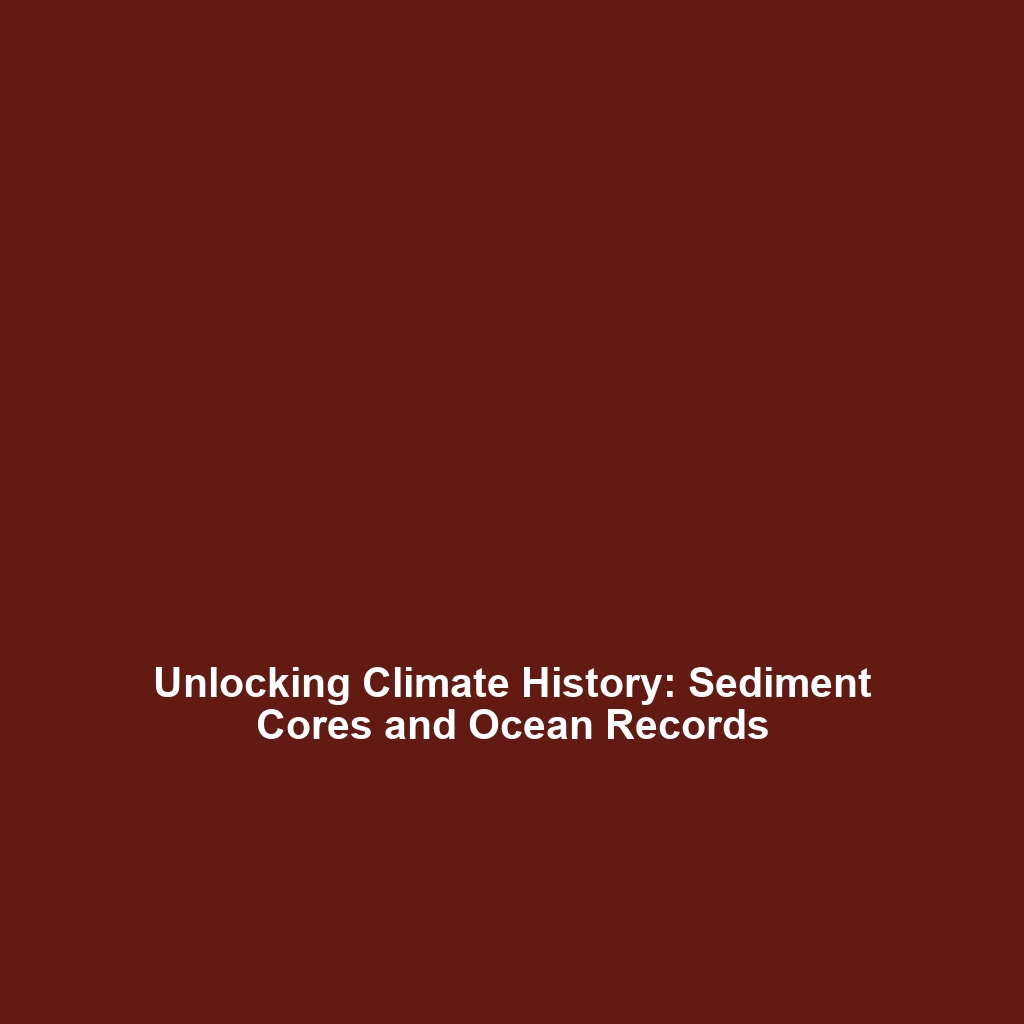Sediment Cores and Ocean Records: A Vital Component of Climate History
Sediment cores and ocean records play a pivotal role in our understanding of climate history. These natural archives preserve complex information about Earth’s climate over millions of years, allowing scientists to decipher past environmental conditions, trends, and events. By analyzing layers of sediments and the materials contained within them, researchers can build a narrative of climatic shifts that have shaped our planet. This article delves into the significance of sediment cores and ocean records within the broader context of climate history, exploring their major concepts, applications, challenges, and future directions.
Key Concepts of Sediment Cores and Ocean Records
Sediment cores are cylindrical sections of sediment collected from the ocean floor or other bodies of water, providing layers of historical data. Ocean records refer to data derived from various oceanographic studies, including temperature, salinity, and chemical composition over time. Together, these tools help scientists understand natural climate variability and anthropogenic influences on climate change. Key concepts include:
1. Layers of Time
Each layer in sediment cores corresponds to a specific time period, revealing changes in climate and environmental conditions.
2. Chemical Analysis
Using isotopic and geochemical analysis, researchers extract information about past temperatures and biological activity.
3. Fossil Records
Sediments often contain microfossils that provide insight into historical biodiversity and ecosystem shifts.
Applications and Real-World Uses
The applications of sediment cores and ocean records in climate history are numerous and impactful. Here are a few significant uses:
- 1. Climate Modeling: How sediment cores inform climate models to predict future climate scenarios.
- 2. Biodiversity Studies: Applications in understanding the impacts of climate change on ecosystem dynamics.
- 3. Resource Management: Guiding fisheries and natural resource management decisions based on historical data.
Current Challenges in Studying Sediment Cores and Ocean Records
Despite their importance, challenges exist in managing and interpreting sediment cores and ocean records:
- Inconsistent data quality across different research studies.
- Limited access to remote or deep-sea sediment sites.
- Challenges in correlating data from various geographical locations.
Future Research and Innovations
Future research in sediment cores and ocean records promises innovative breakthroughs that could enhance our understanding of climate history:
- 1. Advanced Analytical Techniques: Development of high-resolution imaging and genomic tools for better data extraction.
- 2. Machine Learning Applications: Utilizing AI to enhance data analysis and prediction models.
- 3. Interdisciplinary Studies: Collaborations across fields to yield holistic insights into climate change impacts.
Conclusion
In summary, sediment cores and ocean records are indispensable in unraveling the complexities of climate history. By investigating these natural archives, we gain key insights into past climates, which are crucial for informing future policies and conservation efforts. As research progresses, embracing new technologies and methodologies will be vital in overcoming existing challenges. For more information on related topics, explore our articles on Climate Change Impacts and Oceanography Techniques.

